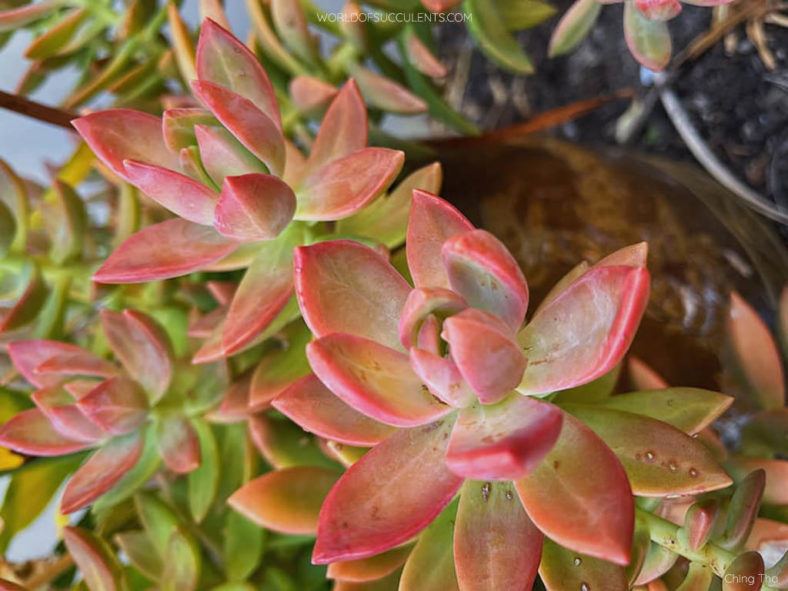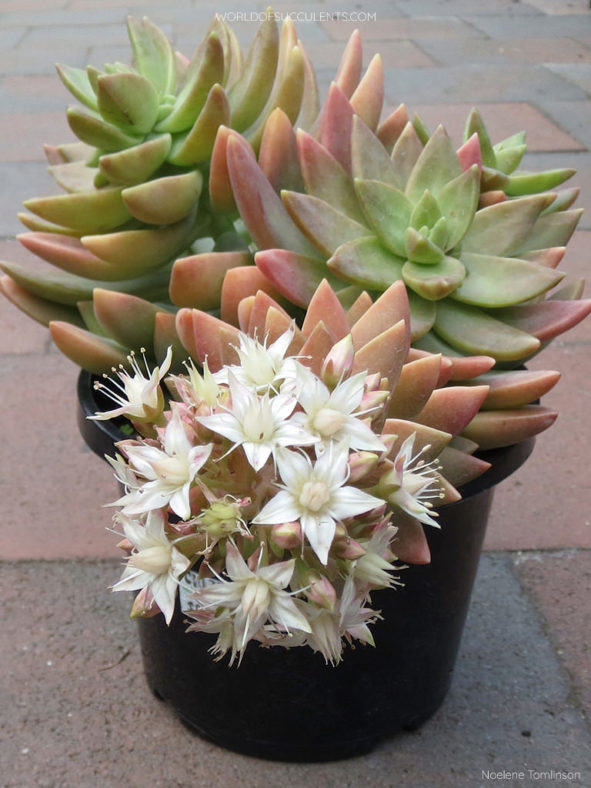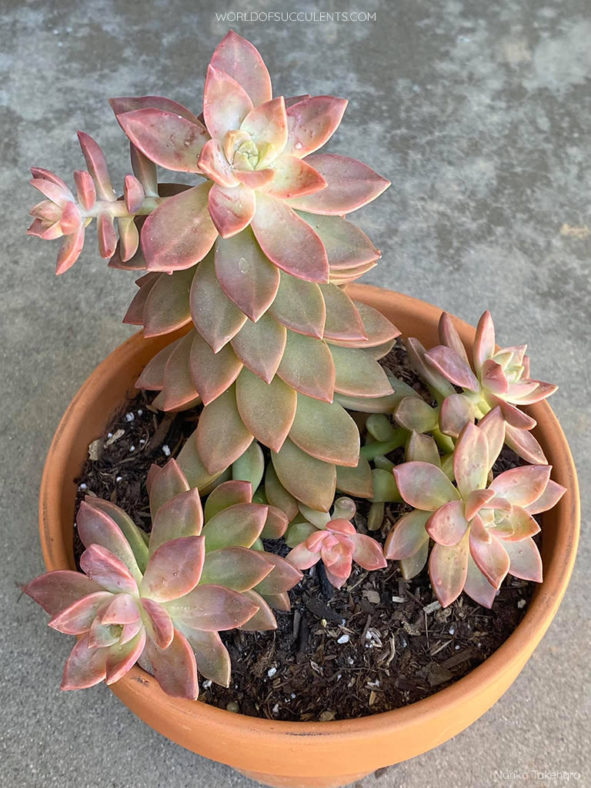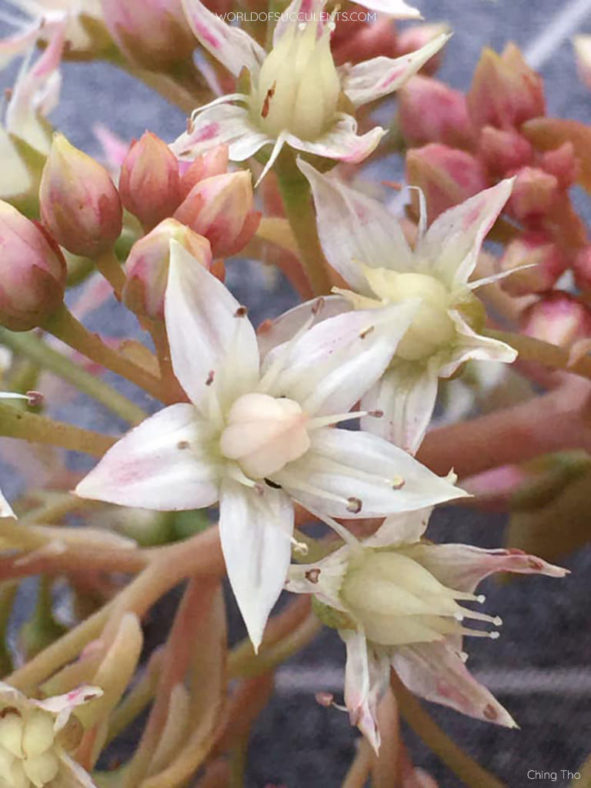Scientific Name
Sedum 'Pat's Pink'
Synonym(s)
×Graptosedum 'Paddy Peate', ×Sedeveria 'Pat's Pink', Sedum 'Pam's Pink'
Scientific Classification
Family: Crassulaceae
Subfamily: Sempervivoideae
Tribe: Sedeae
Genus: Sedum
Origin
Sedum 'Pat's Pink' is a hybrid that probably results from a cross between Sedum adolphi and unknown Sedum species. It was named by Attila Kapitany and is most probably a chance seedling found in the Arizona Cactus nursery of Pat Dixon in Sydney before 1995.
Description
Sedum 'Pat's Pink', also sold as ×Graptosedum 'Paddy Peate' or ×Sedeveria 'Pat's Pink', is a small, spreading succulent shrub that forms rosettes of fleshy leaves highly variable in color. It can grow to 4 inches (10 cm) tall and 8 inches (20 cm) or more across, branching from the base. The rosettes can reach up to 2.8 inches (7 cm) in diameter. As they age, they produce new leaves at the center, shedding the oldest. The leaves can measure up to 1.6 inches (4 cm) long and 0.5 inches (1.2 cm) wide. According to growing conditions, they vary in color from yellow-green to orange, pink, and brown.
The white flowers appear in clusters of 30 or more per inflorescence from mid-winter to spring. They can reach up to 0.6 inches (1.5 cm) in diameter.

How to Grow and Care for Sedum 'Pat's Pink'
Light: This succulent grows best in locations where it will enjoy the full sun for at least six hours daily. It will tolerate partial shade but will not thrive in deep shade. Keep your indoor plant in a sunny window or under artificial lights.
Soil: S. 'Pat's Pink' does not like to sit in waterlogged soil, so drainage is essential to prevent root rot. Choose a well-draining soil mix.
Temperature: This plant is tolerant of heat and freezing temperatures. S. 'Pat's Pink' can withstand temperatures as low as 25 °F (-3.9 °C). USDA Plant Hardiness Zones 9b to 11b, 25 to 50 °F (-3.9 to 10 °C).
Watering: From spring through fall, water thoroughly and wait for the soil to dry out before watering again. In winter, water your plant just enough to keep it from shriveling. Avoid wetting the leaves, stems, and flowers when watering.
Fertilizing: Feed with a balanced organic fertilizer in spring. Feeding is unnecessary as long as the plant is divided annually and provided with fresh soil.
Repotting: Repot your plant when it outgrows its current pot by moving it out to a larger container to hold the plant better. Spring is the best time to repot S. 'Pat's Pink'. Make sure the soil is dry before you begin repotting.
Propagation: Once you have one S. 'Pat's Pink', it is easy to make more by taking stem cuttings and dividing the plant. It is also easy to grow from seed. Take cuttings in spring when the plant is in active growth. Once it has finished flowering, it is the right time for division. Spring or summer is the best time to sow the seeds.
Learn more at How to Grow and Care for Sedum.
Toxicity of Sedum 'Pat's Pink'
S. 'Pat's Pink' is not listed as toxic for people but can be mildly toxic to pets and children.
Links
- Back to genus Sedum
- Succupedia: Browse succulents by Scientific Name, Common Name, Genus, Family, USDA Hardiness Zone, Origin, or cacti by Genus
Photo Gallery
Click on a photo to see a larger version.


